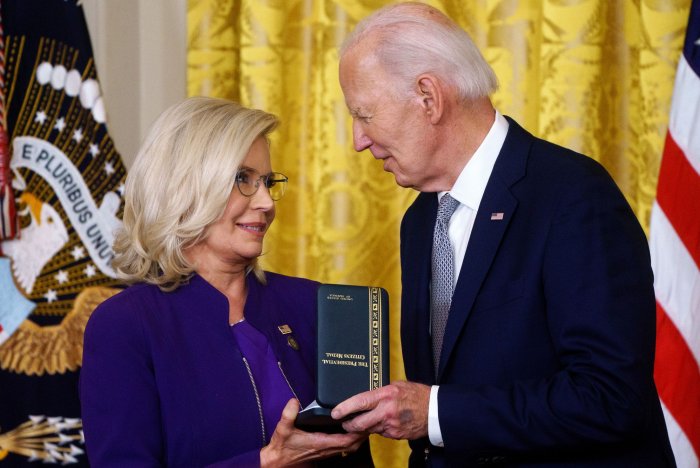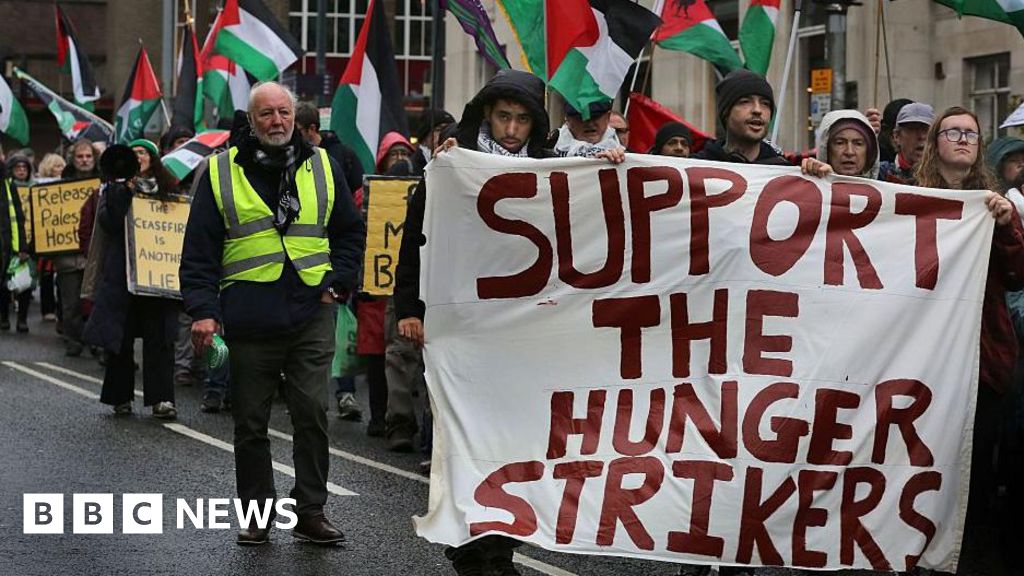Speaking at Prime Minister’s Questions on Wednesday, Sir Keir Starmer said “rules and procedures” were being followed in relation to the hunger strike.
Lawyers for the group have repeatedly written to Deputy Prime Minister and Justice Secretary David Lammy asking for a meeting, saying there is a “real and increasingly likely potential” that their clients would die as a result of their protest.
Fifty-one MPs and peers have also written to Lammy asking him to meet the lawyers.
The protests, which began in November, involve people who have all been charged with offences relating to alleged break-ins or criminal damage on behalf of Palestine Action, charges that are denied.
The alleged incidents all occurred before Palestine Action was banned under terrorism legislation – but their trials are not taking place before next year.
Supporters of the detainees confirmed to BBC News on Wednesday that Jon Cink and Umer Khalid had both ended their hunger strike after 41 days and 13 days respectively.
Qesser Zuhrah and Amy Gardiner-Gibson are said to have each been refusing food for 45 days. Heba Muraisi began her protest a day later. Teuta Hoxha is said to have refused for 38 days and Kamran Ahmed 37 days.
An eighth prisoner is described by supporters as intermittently joining the protest but then breaking it because of an underlying health condition.
Some of the group have had periods in hospital but in each case they have been discharged or have self-discharged.
Your Party MP Zarah Sultana has protested outside HMP Bronzefield, demanding urgent medical care for Qesser Zuhrah, who is on remand there.
On Wednesday, an ambulance arrived at the prison and video posted on social media showed scuffles between protesters and police.
Police were called after protesters “attempted to gain entry to restricted areas”, Surrey Police said.
According to police, a member of prison staff was assaulted while officers tried to remove protesters from the building.
A 29-year-old man from Wellingborough, Northamptonshire, was arrested for suspected assault occasioning bodily harm.
“At the point of arresting this man, several people became disruptive towards police and a police officer was assaulted,” Surrey Police added.
“The protesters then blocked the road, delaying our ability to get medical assistance to the injured officer.”
A woman, 28, from Worcester Park, Surrey, was arrested on suspicion of assault causing grievous bodily harm, and a man, 28, from Glasgow, was taken into custody on suspicion of criminal damage to a police vehicle.
A Ministry of Justice (MoJ) spokesperson said: “The escalation of the protest at HMP Bronzefield is completely unacceptable.
“While we support the right to protest, it is deeply concerning that a member of staff has now been injured and protesters are gaining access to staff entrances – putting hard-working staff and security at risk.”
A spokesman for the South East Coast Ambulance Service would not comment on whether the ambulance had transported a protester to hospital.
During Prime Minister’s Questions on Wednesday, former Labour leader Jeremy Corbyn said to Sir Keir that ministers had declined to meet the protesters’ representatives and one of the group had been taken to hospital.
“Many people are very concerned by the regular breaches of prison conditions and prison rules with respect to these hunger strikes,” he said.
“Will he make arrangements for the Ministry of Justice to meet representatives of the hunger strikers to discuss these breaches of the conditions that they’re experiencing at the present time?”
Sir Keir replied: “He will appreciate there are rules and procedures in place in relation to hunger strikes, and we’re following those rules and procedures.”
On Tuesday, justice minister Jake Richards said in answer to an earlier question from Corbyn that he would not be meeting the group’s lawyers and the Ministry of Justice had “robust and proper guidance and procedures” for such scenarios.
“I am satisfied, and the ministry is satisfied, that those procedures are being enacted and we’ll continue to keep it under review.”
An MoJ spokesperson said: “Prisoners’ wellbeing is continually assessed, and appropriate action is taken, including hospital treatment where required.”
They added His Majesty’s Prison and Probation Service had assured ministers that all cases of prisoner food refusal were being managed in accordance with the relevant policy, and with appropriate medical assessment and support – consistent with prisoner rights.


